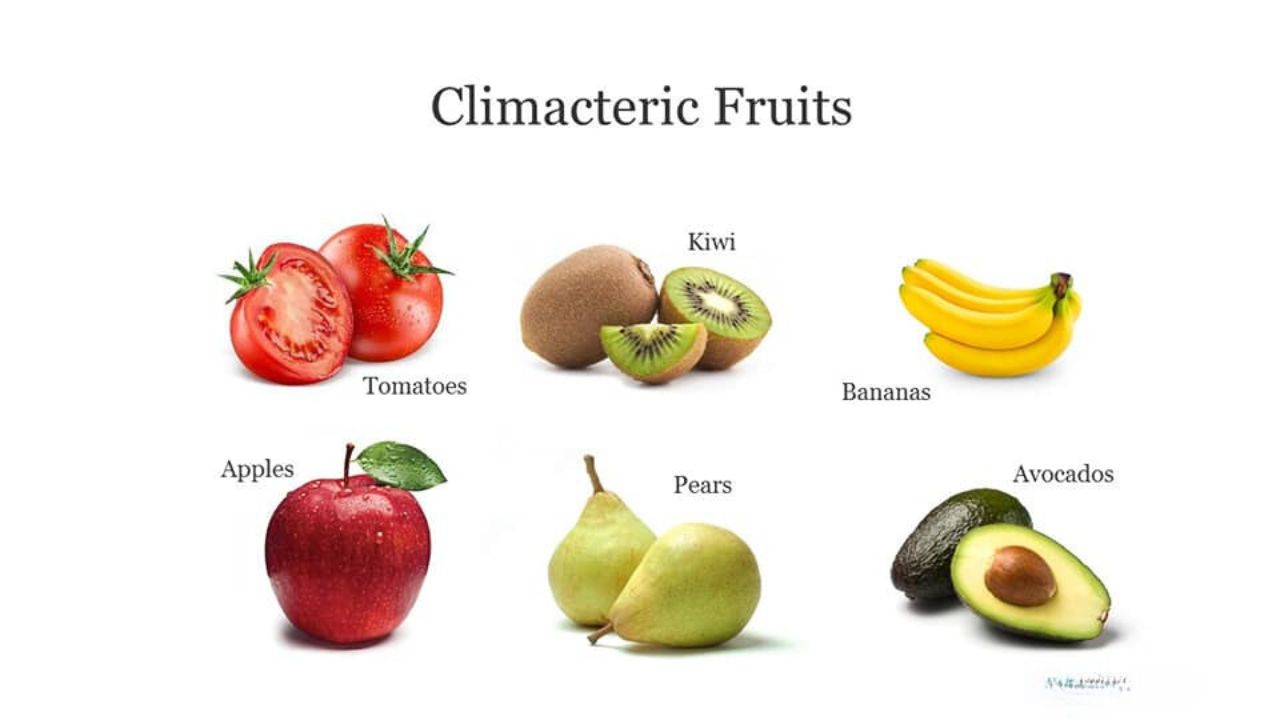Delightfully juicy, freshly red, and packed with essential nutrients – a strawberry is a nature kiss for its lovers. Its redolence is hard to resist, followed by its citrusy flavors, which taste pleasant on the taste buds. Not just its fresh color captivating to the eyes, but the nutrients it carries inside and its impressive sweet flavors make strawberry an extremely loved fruit.
Besides being loaded with too many health benefits, strawberries are more likely to lose their aroma and texture sooner. It does not taste like a perfectly ripened strawberry if picked before or after their ripening time. Also, an under-ripen or over-ripen strawberry does not contain health and economic value, emphasizing the importance of ripening a strawberry correctly. Unfortunately, once a strawberry gets picked, its ripening process is halted, so the harvested strawberry wouldn’t deliver nutritional and aromatic value. In this blog post, we have enlisted some of the effective methods to ripen a strawberry without using any chemical preservatives.
So, if you are a strawberry lover, this blog post is right here for you.
But first, let’s explore some fun facts about strawberries.
Some Quick Facts about Strawberry
- The cultivation of strawberries began in the late 1300s.
- A strawberry is not a berry but a fruit that belongs to the Rosaceae family.
- A single flower of the strawberry-bearing plant produces a cluster of strawberries.
- Strawberries naturally have various colors, including red, white, golden, yellow, and pink. The white-colored strawberries are generally sweeter than the red strawberries.
- Strawberry is enriched with anti-oxidants and is very helpful in flushing out toxic elements from the body.
- Strawberry contains a high amount of Vitamin C and fiber.
- The pH value of a strawberry only remains optimum if it is harvested before or after its ripening time.
- Strawberry is a non-climacteric fruit, meaning its ripening process stops once harvested.
- If placed in the freezer, the shelf life of a strawberry is estimated to be two weeks, while on the outside, it loses its freshness and taste after two days or even less.
- Romans used to believe that strawberries help treat several diseases, including severe fever, gut inflammation, etc.
- China is currently the largest producer of strawberries, followed by the US.
Nutritional Value Of Strawberries
The widely popular strawberry is enriched with several nutrients, and after its cultivation, it was used to treat multiple ailments by the ancient Romans and Greeks. Not just does strawberry feel good on the buds and gives a refreshing feel in the summer and spring season, but it has a strong nutritional value that is beneficial for human health in multiple ways. Due to the distinguishing benefits of strawberries, various skincare brands have started using this aromatic fruit to manufacture various skincare products.
Let’s look into the nutrients in the strawberries and how these add nutritional value to our overall health.
- Protein: 0.6 grams
- Fats: 0.23 grams
- Carbs: 7.7 grams
- Sugars: 5.3 grams
- Calcium: 13 milligrams
- Magnesium: 11 milligrams
- Vitamin C: 57 milligrams
- Vitamin A: 1 milligram
- Fiber: 1.7 grams
- Iron: 0.3 milligrams
Looking at this nutrient chart, it is not wrong to call strawberries a nature’s gift, and once added to the diet, they can help you attain a healthy lifestyle due to the multiple benefits associated with their consumption. Studies clearly show that strawberries contain more Vitamin C than oranges, which is another reason to add it to your diet for its excellent nutritional power.
Health Benefits of Strawberries
Strawberries are cholesterol free and contain a few calories, making them a perfect addition to a nutritional diet. Individuals who are looking to lose some pounds or want to follow an active and healthy diet must add strawberries to their daily intake. The antioxidants in strawberries are responsible for carrying out multiple body functions efficiently. Also, fructose is found in strawberries, a form of healthy sugar, not sucrose or unhealthy added sugars.
- Consuming half a cup of strawberries helps control obesity, and their high fiber content gives the feeling of stomach fullness.
- Strawberries help minimize cellular inflammation, decreasing potential health complications and risks.
- Cosmetic products which are strawberry-based protect skin from the harmful effects of UV rays. Applying strawberry paste topically on the skin decreases swelling and irritation and reduces skin dryness.
- Strawberries help metabolize the glucose in the body and maximize insulin sensitivity in non-diabetic individuals.
- Consuming strawberries help in controlling the joints and knee pains, especially in individuals with osteoarthritis.
- Oxidative stress is more often linked to cancer, and strawberries effectively control oxidative stress that helps prevent various types of cancer.
Multiple Ways of Consuming Strawberries
Strawberry is a delicious fruit that is taken as a whole fruit and can be consumed in various other delectable forms, as mentioned below.
- You can make pancakes with strawberry paste on the topping.
- Add sliced strawberries to your bowl of salad with other healthy ingredients.
- A strawberry cheesecake is a delicious treat for dessert lovers.
- Add strawberries to your bowl of yogurt and consume it as a healthy snack.
- You can shake the frozen strawberries to make smoothies.
- Use strawberry paste as whipped cream to top the dessert of your choice. Strawberry cupcake with cream cheese frosting is heaven for seasonal fruit lovers.
- Strawberry mousse, strawberry lemonade, and strawberry jam are must-haves in summer.
- Chocolate-dipped strawberries are a popular easy-to-make snack.
How to Pick a Strawberry?
Before picking strawberries, it is important to know that strawberry is a non-climacteric fruit. After it gets picked from the plant, its natural ripening process slows down. Strawberries are easily available in the market, and you may find them in various sizes. However, while purchasing strawberries, you probably pick the ones which are either under-ripened or over-ripened. Such strawberries do not taste fresh and do not provide nutritional value.
While picking strawberries from the farm or market, pick the ones that are not discolored, plumped, and firm. Unripen strawberries are either too soft or too hard and do not taste sweeter like a fully ripened strawberry. Strawberries with bright green leaves and red color are ready to be picked. Their texture is soft but not mushy and can be squeezed softly. Although the size of the strawberry is not a determining factor, the ripe strawberries have a larger size than the unripe strawberries.
Ways to Ripen Strawberries
After bringing strawberries home, put them in the fridge to retain their freshness. Do not wash the strawberries if you do not plan to eat them immediately. If you want to keep them fresh for longer, put the unwashed strawberries in an air-tight bag or container and put them in the freezer. Strawberries, when preserved this way, stay fresh for longer and is also a great way to ripe unripe strawberries. If you have picked unripe strawberries, you may still ripe them at home in several ways and enjoy their luscious natural flavors.
Below we have enlisted some of the effective ways to speed up the ripening process of strawberries without changing their texture and flavors.
Place the Strawberries with Climacteric Fruit
Since strawberry is a non-climacteric fruit, keeping it with a climacteric fruit such as a banana helps fasten the ripening process of strawberries. This is the easiest way that helps you enjoy the freshness and fullness of ripened strawberries. Place some strawberries in an air-tight bag and put a banana inside for 3 to 4 days. Strawberries produce more ethylene, which boosts the ripening process of strawberries.
Spread them on a Paper Towel
This is just another tip to ripen the strawberries; it comes directly from your kitchen. Place a clean and dry paper towel on a shelf and spread strawberries on it. Doing so will allow more breathing time for the strawberries. As they breathe, they get mature. The temperature between 57-degree F to 70-degree F is ideal for nurturing strawberries.
Give them a Vinegar Bath
If you want to quicken the ripening process of strawberries, wash them with vinegar before storing them in the fridge. Not just vinegar keeps the strawberries away from mold and bacteria, but it also speeds up the ripening process without affecting the natural juicy flavor of the strawberries.
Crisper Drawer
A crisper drawer in the fridge keeps the moisture away from the strawberries and also speeds up their ripening process. Putting under-ripen strawberries in the refrigerator crisper keeps them fresh and away from bacterial buildup.
Conclusion
Nature is so kind to humans as it blesses us with its unlimited sweetness and perks. Strawberry is a natural asset with several health benefits and tastes heavenly. It is a refreshing, juicy treat that instantly uplifts the mood in summer. If included in the diet, the anti-oxidants help flush toxins out of your body and increase your metabolism.
The firmness and redness indicate that the strawberry is ready to be picked. However, if it is picked before it ripens, you should wait till it gets ripened. The ways mentioned above work effectively to ripe strawberries by keeping them fresh and flavorful. Once these are ready, you may eat them directly or consume them in various ways. The squeezy treat will dance on your taste buds as you munch on this nature’s juicy kiss.
Frequently Asked Questions (FAQs)
Which pigment is responsible for the red color of strawberries?
Strawberry has a naturally occurring pigment known as anthocyanin, which gives red color to strawberries.
Which type of strawberry should in purchase?
While purchasing strawberries, make sure that it has a medium-size, bright-red color, plumped, and fresh.
Are there any adverse effects of consuming strawberries?
Some people suffer through a rare condition known as pollen-food allergy, in which the affected person is allergic to the birch pollen which is present in strawberries. The allergic symptoms may include skin and nasal irritation and facial, lips, and tongue swelling. Moreover, people with thyroid issues might find a strawberry-based diet interfering with the functioning of thyroid glands.
Which fruits are considered climacteric?
Climacteric fruits are those which keep ripening even if harvested before time. The climacteric group of fruits includes bananas, apples, tomatoes, pears, avocados, kiwis, papaya, mango, and many more.
What is the shelf life of strawberries?
When kept in the freezer, strawberries can last up to 6 months. If stored in the fridge with a vinegar wash, strawberries can be stored for up to 2 weeks, while at room temperature, they can be stored for two days.
Enlist some of the health benefits of strawberries.
Strawberries effectively treat various diseases, such as heart complications, metabolic syndrome, obesity, and certain types of cancer.
Is it possible to ripe strawberries at room temperature?
Strawberries can ripe at room temperature if placed on a dry shelf away from direct sunlight. When sun heat or indirect rays land on the unripe strawberries, they boost their ripening process and make them sweeter.
What can I make with unripe strawberries?
If the strawberries you picked are not completely ripe and you just want to utilize them sooner, you can make a strawberry spread, jam, jelly, or syrup by following any recipe. The naturally occurring pectin in strawberries is perfect for the deliciousness of strawberry jam.
Can I eat unripe strawberries?
It is not recommended to eat unripe strawberries as they are sour, too firm, and may contain some harmful toxins. Due to the presence of certain bacteria such as shigella, E. coli, and Salmonella, these strawberries may cause food poisoning or other health issues so it is better to avoid eating under-ripe strawberries.
Does vinegar change the color or taste of strawberries?
Soaking strawberries in vinegar boosts their ripening process but may add a little tart and tangy flavor to them. If you do not want your strawberries to lose their natural color and taste, it is suggested to use light-colored vinegar and not soak strawberries for more than 30 minutes in it.
When should I discard the strawberries?
Although strawberries can stay fresh for longer if kept in the freezer at a cold temperature, they may lose their texture and flavors sooner at room temperature. If strawberries show any sign of mold or bruises or develop a mushy texture and weird odor, it’s time to discard them, as these are no more edible at this stage.
Are unripe strawberries sweeter than ripe strawberries?
Obviously, the unripe strawberries are sweeter in taste than the ripe ones. As the ripening process continues, the complex carbohydrates are decomposed into simple natural sugars, which boost the sugar concentration in the strawberries as they ripen.
What is the effective artificial method for ripe strawberries?
Strawberries’ exposure to ethylene gas helps break down complex carbohydrates into fructose and speeds up ripening. The exposure should not be for too long. This is one of the most popular and safest methods to use at the industrial level.

John Davis is a passionate content writer with a knack for crafting engaging narratives across various subjects. With a keen eye for detail and a love for storytelling, John brings ideas to life through the power of words. His dedication to delivering high-quality and informative content has made him a trusted voice in the digital realm. When he’s not at his desk, you’ll find John exploring new hobbies and seeking inspiration in the world around him.










Loading…